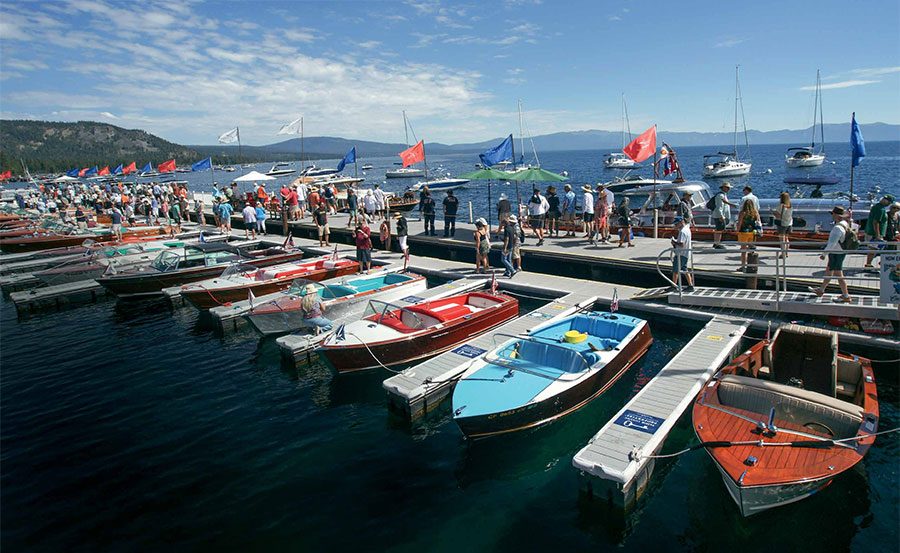

With 49 editions under its belt so far, the most prestigious static contest in North America has now reached its 50th anniversary. And it continues to grow in every sense.
Boating enthusiasts call it the ‘Lake Como of America’. In reality, the landscape of Lake Tahoe, located on the border between California and Nevada, does not much resemble the setting of that lake in Lombardy (Italy) that so bewitched Stendhal, Manzoni and other writers – as well as moguls, footballers and movie stars.
Formed two million years ago – when its Como counterpart was already four million years old – Lake Tahoe reaches a maximum depth of 501m and is second in depth in the United States only to Crater Lake, Oregon. It is approximately 35km long and 19km wide, boasting 116km of coastline and a surface area of approximately 490km2
In ancient times the region was inhabited by members of the Washo tribe, while the first exploration by Europeans was in 1844. Modern development and tourism came about a century later.
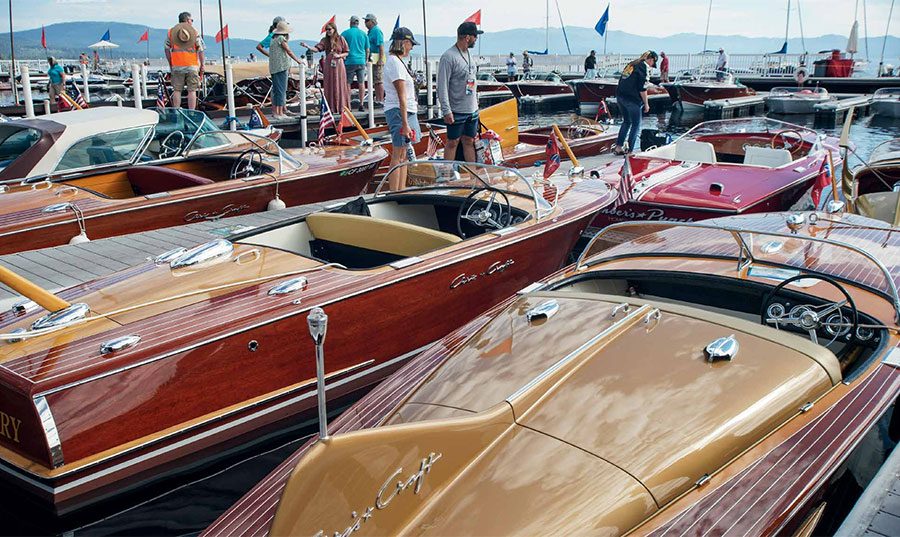
The lake is surrounded by the peaks of the Sierra Nevada range, forests of emerald-green conifers, and fringed by wooden cabins with sloping roofs that remind visitors that this is a mountain lake with an altitude just below 2000m. Between late November and early April, the region transforms into an exclusive retreat for winter sports lovers. In 1960 it hosted the VIII Olympic Winter Games at the Squaw Valley Resort, now known as Palisades Tahoe.
In summer, everything looks very different. The lake turns into a paradise for boaters – and while sailboats are popular in the United States, horsepower is decidedly more so. It seems, for Americans, there’s no such thing as too much horsepower.
George Whittell Jr. (1881-1969), one of the moguls who contributed to the popularity of Lake Tahoe, also thought so. His ghostly presence can be felt almost everywhere around these shores, especially when his famous Thunderbird (1939) docks at the jetties of the Obexer’s Boat Company. In the 1940s his craft was almost certainly the most beautiful ‘commuter’ in the world: a concentration of mahogany and polished steel that possibly had more in common with airplanes than boats. He was so keen on the Thunderbird that he decided to hide her in wartime – he was afraid that the government might take her away from him and relegate her to tasks that would not fit her pedigree.
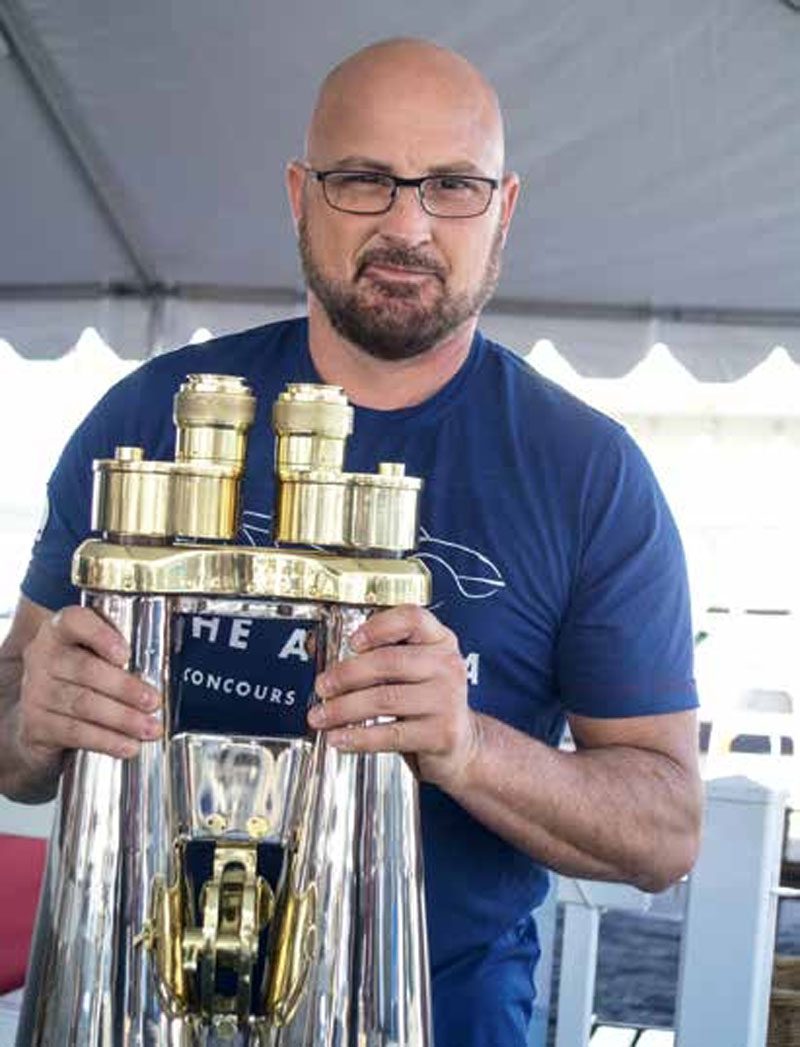
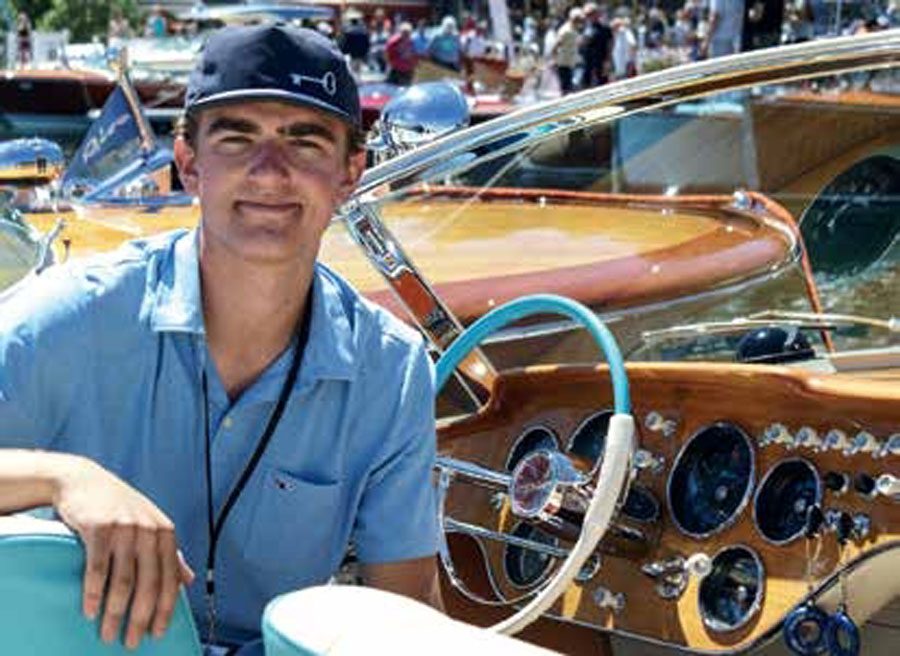
Thunderbird is a common sight at the Lake Tahoe Concours d’Elegance, even though she was unable to attend in 2022 due to a drop in water levels that prevented her from leaving her boathouse on the eastern shore of the lake. The boat belongs to the Thunderbird Preservation Society (TPS), a non-profit organisation entirely funded by gifts and donations from the general public and members of the society, which itself relies on 75 volunteers, 10 of whom work directly with Thunderbird as crewmen and technicians.
One of these is Howard Golub, with 30 years spent in the US Coast Guard as a marine engineer. ‘We pay homage to George Whittell’s Legacy,” says Golub, “protecting and interpreting the region’s treasures, namely Whittell’s estate, the Thunderbird Lodge, the yacht of the same name, as well as the vast archives and collections pertaining to this history and environment. The public can observe preservation in progress, including architecture, stone masonry, shipwright work and archiving.”
The boat literally shines around Golub, as other crewmen and dozens of people take seemingly endless photos from the jetty. Some queue to board for a ride on the lake, a service provided for a fee of US$20 per person to raise money for the TPS. The steel doghouse is a magnificent example of aircraft design from the time when the yacht was built. It’s well known that Whittell was very fond of airplanes, in addition to having a life-long fascination with automotive technology and boat design.
Commissioned while George Whittell was building his estate, the M/V Thunderbird was designed by the legendary John L. Hacker (1877-1961), the founder of Hacker-Craft in 1908. She was built in the Great Lakes region by Huskins Boat Works of Bay City, Michigan. The design was dictated by the request that the hull and cockpit resemble the fuselage of Whittell’s personal Douglas DC-2 aircraft. Fashioned from double-planked mahogany and brushed stainless steel, the craft was originally fitted with twin V-12 550hp Kermath engines, later replaced by twin Allison V-12 1710 aero engines (the same powerplant as the WWII Lockheed P-38 Lightnings), for a total of 2,200hp and a top speed of 60 knots.
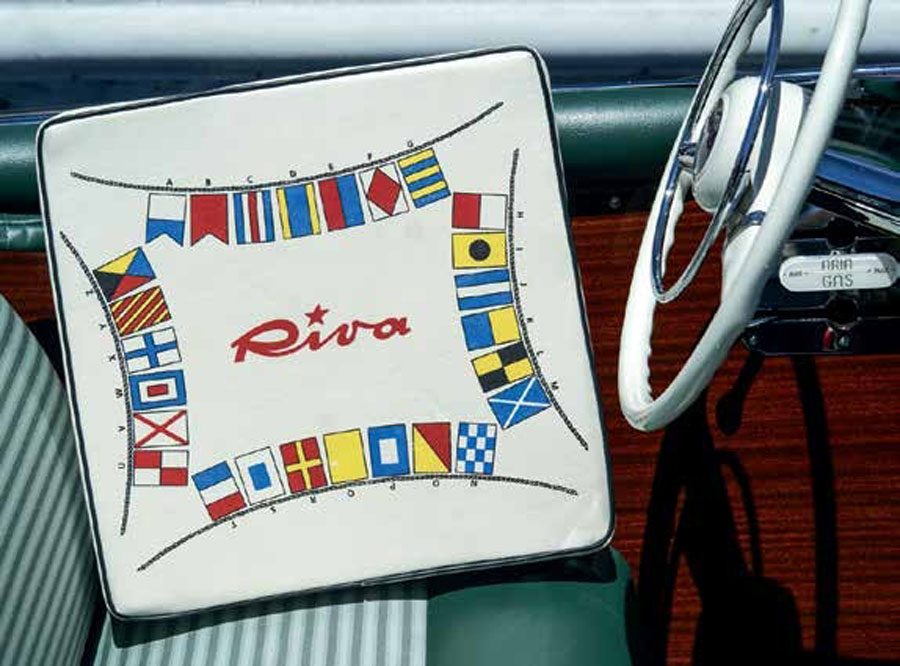

HALF A CENTURY IN STYLE
Founded in 1973, the Lake Tahoe Concours d’Elegance has reached its 49th edition (due to the Covid-19 pandemic, two events were cancelled). It is the most important static nautical event in North America, where the protagonists are magical craft: masterpieces of mahogany and chromed steel, so polished you’d better wear sunglasses when the clouds part.
Since 2014 the event venue has been Obexer’s Boat Company Marina in Homewood (California shore). Obexer’s was founded in 1911 by an Austrian emigrant from Bolzano (today’s Italy). One of his descendants, Sarah Obexer, helms the boatyard today, a business that continues to prosper thanks to the local marina and side activities.
Several Europeans were among the many visitors this year. One was Ferdinando Zanoletti, the president of the Museo Barca Lariana, home to one of the world’s largest boat collections.
“My first visit to Tahoe dates back to 1983,” said Zanoletti , “and I must say that much has changed since then. Once there were more boats, even small ones equipped with outboard engines, but they were not as well preserved as they are today. Particularly striking are the engines, clean and polished, and the paintwork, which appears so fresh that you refrain from touching… Just as in Europe, the attention to detail here too has become obsessive. As for the Rivas, I remember seeing just one in 1983: this year, if I’m not mistaken, there were 12!”.
His words were echoed by his compatriot Erio Matteri, a restorer of the Sarnico runabouts and a regular judge at the Lake Tahoe Concours d’Elegance: “The event has grown considerably over the past 10 to 15 years… It has become a great spectacle, well organised, with more money and folks involved, and with beautiful boats aplenty. To me, certain restorers tend to take too many liberties, deviating somewhat from the original projects, but in general, the restoration works are well done and the [standard of] competing boats get better and better each year.”

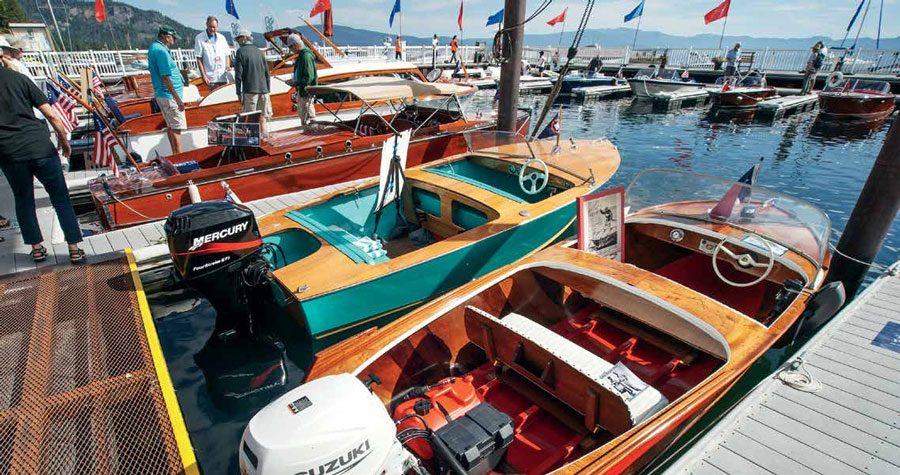
THE LAST EDITION
This year the boats, including those not competing, exceeded 70 vessels. And counting those for sale, which are displayed on trailers throughout the Obexer’s Boat Company marina, there were many more to feast the eyes on. The exhibitors, along with all the rest, make this event, in an easy-to-reach setting thanks to its relative proximity to San Francisco and with Reno (Nevada) airport just over an hour’s drive away, perfect for those keen to experience the world of vintage motorboats.
Thirteen prizes were awarded. The ‘overall best in show’ boat was won by a 1953 Riva Tritone named Perlita Too – perhaps the first-ever Riva exported to the United States – with prizes awarded to the most beautiful craft of three of the other most represented brands: Chris-Craft (Capriccioso, a Capri built in 1960); Gar Wood (Tiny Dancer, a 1946 Ensign model); and Century (Sweet Water, a 1960 Restorer).
And then there were the awards for the most elegant boat (Inevitable, a 1957 Sedan Cruiser); the best craft made in the 1960s (Honeh II, a 1969 Commander SS); the people’s choice (Tucker, a 1956 Custom Sportsman) and more.
Only once the prizes were awarded and the event officially closed at 4pm on Saturday 12 August, were the boats able to turn on their engines, cast off their moorings, and embrace their favorite element. This they performed upon passing under the tiny Olson Bridge, the best place to view, hear the noise of the engines, and inhale the acrid smell of burnt fuel.
So, while the Lake Tahoe Concours d’Elegance is by definition a static event – and has been for 50 years – for many visitors, like me, the ‘Roar-Off’ is the event’s key moment. BNZ




